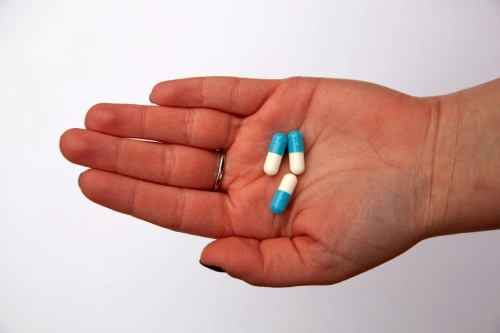Healthcare-Associated Infections (HCAIs) represent a critical challenge within healthcare settings globally. These infections, acquired whilst receiving medical treatment, significantly impact patient health outcomes and can put significant strain on healthcare systems. As such, understanding the nature of HCAIs, their types, causes, prevention strategies, and recent advancements is paramount in effectively addressing this issue.
Understanding Healthcare-Associated Infection (HCAIs)
HCAIs, also known as nosocomial infections, are infections that patients acquire during the course of receiving healthcare treatment within various healthcare facilities, including hospitals, clinics, and long-term care facilities.
HCAIs have a substantial impact on patient health and healthcare costs. Studies published in journals such as The Lancet and BMJ demonstrate the adverse effects of HCAIs on patient outcomes, including prolonged hospitalisations and increased mortality rates. Additionally, HCAIs impose significant financial burdens on healthcare systems – in the UK, research shows that in 2016/17, HCAIs cost the NHS £2.1 billion.
Hospital-acquired infections occur due to various factors, including inadequate hand hygiene, improper sterilisation of medical equipment, contaminated surfaces, and the overuse or misuse of antibiotics. Patients with compromised immune systems, invasive medical procedures, prolonged hospital stays, and exposure to invasive devices such as catheters and ventilators are at increased risk of acquiring HCAIs.
Prevalence and Impact of HCAIs
According to the World Health Organization (WHO), HCAIs are a significant cause of morbidity and mortality globally, affecting millions of patients each year. In England specifically, 300,000 people contract HCAIs as a response to NHS care. The most common HCAIs amongst these numbers are respiratory infections (22.8%), urinary tract infections (17.2%) and surgical site infections (15.7%).
Common Types of HCAIS
Catheter-associated urinary tract infections (CAUTIs)
Catheter-associated urinary tract infections (CAUTIs) are among the most common HCAIs worldwide, posing a significant challenge to patient care and healthcare systems.
CAUTIs occur when bacteria enter the urinary tract through urinary catheters, leading to infection. They are prevalent in healthcare settings, particularly among patients with indwelling catheters for prolonged periods. CAUTIs not only cause discomfort and complications for patients but also contribute to increased hospital stays, antibiotic use, healthcare costs, and mortality rates.
Several factors increase the risk of developing CAUTIs. These include prolonged catheterisation, improper catheter insertion and maintenance techniques, underlying health conditions (such as diabetes or immunosuppression), and older age.
Surgical Site Infections (SSIs)
Surgical site infections (SSIs) represent a common and potentially serious complication of surgical procedures, posing challenges to both patients and healthcare providers. SSIs occur when bacteria contaminate the surgical site during or after a surgical procedure, leading to infection. These infections can result in prolonged hospital stays, increased healthcare costs, delayed wound healing, and in severe cases, life-threatening complications such as sepsis. SSIs not only affect patient outcomes but also impose a significant burden on healthcare systems.
Central line-associated bloodstream infections (CLABSIs)
Central line-associated bloodstream infections (CLABSIs) are another significant concern in healthcare settings, particularly in intensive care units and for patients with complex medical conditions. CLABSIs occur when bacteria or other pathogens enter the bloodstream through a central venous catheter and can result in serious complications, including sepsis, organ failure, prolonged hospital stays, and increased mortality rates.
Pneumonia
Pneumonia is a common and potentially serious respiratory infection that affects millions of people worldwide each year. Pneumonia is an infection that inflames the air sacs in one or both lungs. These air sacs may fill with fluid or pus, causing symptoms such as cough, fever, difficulty breathing, and chest pain. Pneumonia can be caused by various pathogens, including bacteria, viruses, fungi, and parasites.
The most common causes of pneumonia include bacteria such as Streptococcus pneumoniae, viruses such as influenza and respiratory syncytial virus (RSV), and less frequently, fungi such as Pneumocystis jirovecii. Pneumonia can also develop as a secondary infection following other respiratory illnesses, such as the flu.
Gastroenteritis
Gastroenteritis, often referred to as the stomach flu, is a common and highly contagious condition characterised by inflammation of the gastrointestinal tract. Gastroenteritis is typically caused by viral, bacterial, or parasitic infections that result in inflammation of the stomach and intestines. Common pathogens responsible for gastroenteritis include norovirus, rotavirus, Salmonella, Campylobacter, and Escherichia coli (E. coli). Transmission occurs through contaminated food or water, person-to-person contact, or contact with contaminated surfaces.
Prevention and Control Measures for HCAIs
Preventing HCAIs necessitates the implementation of stringent infection control practices. Key measures include proper hand hygiene, environmental cleaning, sterilisation of medical equipment, adherence to isolation precautions, and judicious use of antibiotics. The World Health Organization (WHO) offers guidelines on infection prevention and control, outlining standard precautions to mitigate the risk of HCAIs.
Importance of hand hygiene and proper use of PPE
Hand hygiene is universally recognised as one of the most effective measures for preventing the transmission of hospital-acquired infections. Proper hand hygiene, including handwashing with soap and water or using alcohol-based hand sanitisers, helps remove and kill pathogens present on the hands of healthcare workers. Numerous studies have demonstrated the efficacy of hand hygiene in reducing the risk of healthcare-associated infections (HAIs) and improving patient outcomes.
Personal protective equipment (PPE), including gloves, gowns, masks, and eye protection, also serves as a barrier to prevent the transmission of infectious diseases between healthcare workers and patients, particularly during invasive procedures. Proper and consistent use of PPE is essential, particularly when providing care to patients with known or suspected infectious diseases. Research has shown that appropriate PPE use is associated with reduced rates of occupational exposures and healthcare-associated infections.

Environmental cleaning and disinfection
Environmental cleaning and disinfection are essential strategies for reducing the burden of infectious diseases and preventing outbreaks. Cleaning removes dirt, debris, and organic matter from surfaces, while disinfection kills or inactivates pathogens, further reducing the risk of transmission. By targeting high-touch surfaces and areas with known contamination, such as patient rooms, bathrooms, and common areas, environmental cleaning and disinfection help break the chain of transmission and protect individuals from infection.
Numerous studies have demonstrated the efficacy of environmental cleaning and disinfection in reducing healthcare-associated infections (HAIs) and controlling outbreaks. Research has shown that implementing comprehensive environmental hygiene protocols, including routine cleaning and targeted disinfection of high-touch surfaces, can significantly decrease the transmission of pathogens in healthcare settings.
Proper use of antibiotics
Numerous studies have also highlighted the impact of antibiotic stewardship interventions in reducing antibiotic resistance, minimising HCAIs and improving patient care. Research has shown that implementing antibiotic stewardship programs in healthcare settings is associated with reductions in antibiotic consumption, rates of antibiotic-resistant infections, and adverse drug events. In turn, this allows reduced transmission of HCAIs as pathogens are more susceptible to treatment and the spread can be stopped early.
Research published in scientific databases like PubMed highlights ongoing efforts to develop novel antimicrobial agents, enhance surveillance systems, and implement effective infection control measures. Dr. Sarah Thompson, an infectious disease specialist, emphasises the importance of collaborative efforts in addressing HCAIs: “Preventing HCAIs requires a multifaceted approach involving healthcare professionals, policymakers, and patients. Implementing evidence-based infection control practices and fostering a culture of vigilance are essential in mitigating the risk of HCAIs.”

National and Local Guidelines for HCAI Prevention
Mandatory Surveillance Programs
An important part of minimising HCAIs is support from local and national government. The UK government has established mandatory surveillance programs to monitor the prevalence of HCAIs in healthcare facilities across the country. The Health Protection Agency (now part of Public Health England) implemented the mandatory surveillance of healthcare-associated infections (SSHAIs) program, which requires healthcare providers to report data on specific infections, including bloodstream infections, surgical site infections, and urinary tract infections. These surveillance programs provide valuable data for identifying trends, implementing targeted interventions, and evaluating the effectiveness of infection control measures.
National Cleanyourhands Campaign
In 2004, the UK Department of Health launched the National Cleanyourhands campaign to promote hand hygiene compliance among healthcare workers. The campaign aimed to raise awareness about the importance of hand hygiene in preventing the spread of infections and to encourage healthcare workers to adhere to hand hygiene protocols. The campaign provided resources, such as posters, leaflets, and educational materials, to healthcare facilities across the country. Studies evaluating the impact of the campaign reported significant improvements in hand hygiene compliance and reductions in HAIs.
The Saving Lives: Reducing Infection, Delivering Clean and Safe Care Strategy
Only three years later, the UK government launched the Saving Lives strategy, outlining a comprehensive approach to reducing HAIs and improving patient safety in healthcare settings. The strategy focused on implementing evidence-based interventions, such as catheter care bundles, surgical site infection prevention protocols, and antimicrobial stewardship programs. It also emphasised the importance of leadership, governance, and multidisciplinary collaboration in driving quality improvement initiatives.
Antimicrobial Resistance (AMR) Strategy
The UK government has also recognised the growing threat of antimicrobial resistance (AMR) and its implications for patient care. In response, it has developed a national AMR strategy to address the overuse and misuse of antibiotics and promote antimicrobial stewardship in healthcare settings. The strategy includes initiatives to improve surveillance of antimicrobial use and resistance, enhance infection prevention and control practices, and support research and innovation in the development of new antimicrobial agents.
National Institute for Health and Care Excellence (NICE) Guidelines
The National Institute for Health and Care Excellence (NICE) develops evidence-based guidelines to support healthcare professionals in delivering high-quality care. NICE guidelines cover various aspects of infection prevention and control, including hand hygiene, catheter care, surgical site infection prevention, and antimicrobial prescribing. These guidelines provide healthcare providers with recommendations based on the best available evidence and expert consensus, helping to standardise practices and improve patient outcomes.
Limitations of Current HCAI Management
Although there are a number of methods to control the spread of HCAIs, there are also many limitations. One of the biggest challenges in HCAI management is the emergence of antibiotic resistance. Despite healthcare efforts globally, overuse and misuse of antibiotics have led to the development of multidrug-resistant pathogens, rendering traditional antibiotic treatments ineffective. This not only complicates HCAI management but also poses a threat to patient safety and public health. Addressing antibiotic resistance requires concerted efforts to promote antimicrobial stewardship, develop new antibiotics, and implement infection prevention and control measures.
Despite the recognition of hand hygiene as a cornerstone of infection prevention, compliance rates among healthcare workers remain suboptimal and studies have shown that hand hygiene compliance rates vary widely across healthcare settings. Improving hand hygiene compliance requires ongoing education, training, and implementation of strategies to promote a culture of hand hygiene excellence.
Conclusion
In conclusion, combating HCAIs requires a concerted effort from all stakeholders involved in healthcare delivery. By understanding the causes, implementing effective prevention measures, and continually educating of recent advancements and research, healthcare providers can mitigate the burden of HCAIs on patient health and healthcare systems. Continuous education, training, and adherence to best practices are imperative in addressing this persistent challenge and ensuring patient safety in healthcare settings.
References:
https://cks.nice.org.uk/topics/healthcare-associated-infections/#:~:text=Around%20300%2C000%20people%20a%20year%20in%20England%20acquire,healthcare-associated%20infection%20as%20a%20result%20of%20NHS%20care.
Guest JF, Keating T, Wigglesworth N. Modelling the annual NHS costs and outcomes attributable to healthcare-associated infections in England. BMJ Open 2020;10:e033367. doi:10.1136/bmjopen-2019-033367
Tambyah PA, Oon J. Catheter-Associated Urinary Tract Infection. Curr Opin Infect Dis. 2012;25(4):365-70. doi: 10.1097/QCO.0b013e328354fe4d.
Saint S, Meddings JA, Calfee D, Kowalski CP, Krein SL. Catheter-Associated Urinary Tract Infection and the Medicare Rule Changes. Ann Intern Med. 2009;150(12):877-84. doi: 10.7326/0003-4819-150-12-200906160-00008.
Hooton TM, Bradley SF, Cardenas DD, Colgan R, Geerlings SE, Rice JC, et al. Diagnosis, Prevention, and Treatment of Catheter-Associated Urinary Tract Infection in Adults: 2009 International Clinical Practice Guidelines from the Infectious Diseases Society of America. Clin Infect Dis. 2010;50(5):625-63. doi: 10.1086/650482.
Lo E, Nicolle LE, Coffin SE, Gould C, Maragakis LL, Meddings J, et al. Strategies to Prevent Catheter-Associated Urinary Tract Infections in Acute Care Hospitals: 2014 Update. Infect Control Hosp Epidemiol. 2014;35(5):464-79. doi: 10.1086/675718.
Anderson DJ, Podgorny K, Berríos-Torres SI, Bratzler DW, Dellinger EP, Greene L, et al. Strategies to Prevent Surgical Site Infections in Acute Care Hospitals: 2014 Update. Infect Control Hosp Epidemiol. 2014;35 Suppl 2:S66-88. doi: 10.1086/677144.
Ban KA, Minei JP, Laronga C, Harbrecht BG, Jensen EH, Fry DE, et al. American College of Surgeons and Surgical Infection Society: Surgical Site Infection Guidelines, 2016 Update. J Am Coll Surg. 2017;224(1):59-74. doi: 10.1016/j.jamcollsurg.2016.10.029.
Berrios-Torres SI, Umscheid CA, Bratzler DW, Leas B, Stone EC, Kelz RR, et al. Centers for Disease Control and Prevention Guideline for the Prevention of Surgical Site Infection, 2017. JAMA Surg. 2017;152(8):784-91. doi: 10.1001/jamasurg.2017.0904.
Tanner J, Padley W, Davey S, Murphy K, Brown B. Association between the Surgical Suture Technique and the Risk of Surgical Site Infection. JAMA Surg. 2014;149(4):386-93. doi: 10.1001/jamasurg.2013.3970.
O’Grady NP, Alexander M, Burns LA, Dellinger EP, Garland J, Heard SO, et al. Guidelines for the Prevention of Intravascular Catheter-Related Infections. Clin Infect Dis. 2011;52(9):e162-93. doi: 10.1093/cid/cir257.
Marschall J, Mermel LA, Fakih M, Hadaway L, Kallen A, O’Grady NP, et al. Strategies to Prevent Central Line-Associated Bloodstream Infections in Acute Care Hospitals: 2014 Update. Infect Control Hosp Epidemiol. 2014;35 Suppl 2:S89-107. doi: 10.1086/676533.
Maki DG, Kluger DM, Crnich CJ. The Risk of Bloodstream Infection in Adults With Different Intravascular Devices: A Systematic Review of 200 Published Prospective Studies. Mayo Clin Proc. 2006;81(9):1159-71. doi: 10.4065/81.9.1159.
Jain S, Self WH, Wunderink RG, Fakhran S, Balk R, Bramley AM, et al. Community-Acquired Pneumonia Requiring Hospitalization among U.S. Adults. N Engl J Med. 2015;373(5):415-27. doi: 10.1056/NEJMoa1500245.
Mandell LA, Wunderink RG, Anzueto A, Bartlett JG, Campbell GD, Dean NC, et al. Infectious Diseases Society of America/American Thoracic Society Consensus Guidelines on the Management of Community-Acquired Pneumonia in Adults. Clin Infect Dis. 2007;44 Suppl 2:S27-72. doi: 10.1086/511159.
Torres A, Peetermans WE, Viegi G, Blasi F. Risk Factors for Community-Acquired Pneumonia in Adults in Europe: A Literature Review. Thorax. 2013;68(11):1057-65. doi: 10.1136/thoraxjnl-2013-204282.
Hall AJ, Lopman BA, Payne DC, Patel MM, Gastanaduy PA, Vinjé J, et al. Norovirus Disease in the United States. Emerg Infect Dis. 2013;19(8):1198-205. doi: 10.3201/eid1908.130465.
Harris JP, Edmunds WJ, Pebody R, Brown DW, Lopman BA. Deaths from Norovirus among the Elderly, England and Wales. Emerg Infect Dis. 2008;14(10):1546-52. doi: 10.3201/eid1410.071344.
Parashar UD, Burton A, Lanata C, Boschi-Pinto C, Shibuya K, Steele D, et al. Global Mortality Associated with Rotavirus Disease among Children in 2004. J Infect Dis. 2009;200 Suppl 1:S9-15. doi: 10.1086/605025.
Allegranzi B, Pittet D. Role of Hand Hygiene in Healthcare-Associated Infection Prevention. J Hosp Infect. 2009;73(4):305-15. doi: 10.1016/j.jhin.2009.04.019.
World Health Organization. WHO Guidelines on Hand Hygiene in Health Care: First Global Patient Safety Challenge Clean Care Is Safer Care. Geneva: World Health Organization; 2009.
Siegel JD, Rhinehart E, Jackson M, Chiarello L, and the Healthcare Infection Control Practices Advisory Committee. 2007 Guideline for Isolation Precautions: Preventing Transmission of Infectious Agents in Healthcare Settings. Am J Infect Control. 2007;35(10 Suppl 2):S65-164. doi: 10.1016/j.ajic.2007.10.007.
Kwon JH, Burnham CD, Reske KA, Liang SY, Hink T, Wallace MA, et al. Assessment of Healthcare Worker Protocol Deviations and Self-Contamination During Personal Protective Equipment Donning and Doffing. Infect Control Hosp Epidemiol. 2017;38(9):1077-83. doi: 10.1017/ice.2017.132.
Weber DJ, Rutala WA, Miller MB, Huslage K, Sickbert-Bennett E. Role of Hospital Surfaces in the Transmission of Emerging Health Care-Associated Pathogens: Norovirus, Clostridium Difficile, and Acinetobacter Species. Am J Infect Control. 2010;38(5 Suppl 1):S25-33. doi: 10.1016/j.ajic.2010.03.003.
Otter JA, Yezli S, Salkeld JA, French GL. Evidence That Contaminated Surfaces Contribute to the Transmission of Hospital Pathogens and an Overview of Strategies to Address Contaminated Surfaces in Hospital Settings. Am J Infect Control. 2013;41(5 Suppl):S6-11. doi: 10.1016/j.ajic.2012.12.004.
Dancer SJ. The Role of Environmental Cleaning in the Control of Hospital-Acquired Infection. J Hosp Infect. 2009;73(4):378-85. doi: 10.1016/j.jhin.2009.03.030.
Davey P, Brown E, Fenelon L, Finch R, Gould IM, Hartman G, et al. Interventions to Improve Antibiotic Prescribing Practices for Hospital Inpatients. Cochrane Database Syst Rev. 2013;4:CD003543. doi: 10.1002/14651858.CD003543.pub3.
Baur D, Gladstone BP, Burkert F, Carrara E, Foschi F, Döbele S, et al. Effect of Antibiotic Stewardship on the Incidence of Infection and Colonization with Antibiotic-Resistant Bacteria and Clostridium Difficile Infection: A Systematic Review and Meta-Analysis. Lancet Infect Dis. 2017;17(9):990-1001. doi: 10.1016/S1473-3099(17)30325-0.
Srinivasan A. Antibiotic Stewardship: Why We Must, How We Can. Cleve Clin J Med. 2017;84(9):673-9. doi: 10.3949/ccjm.84a.16126.
Tacconelli E, Carrara E, Savoldi A, Harbarth S, Mendelson M, Monnet DL, et al. Discovery, Research, and Development of New Antibiotics: The WHO Priority List of Antibiotic-Resistant Bacteria and Tuberculosis. Lancet Infect Dis. 2018;18(3):318-27. doi: 10.1016/S1473-3099(17)30753-3.
Erasmus V, Daha TJ, Brug H, Richardus JH, Behrendt MD, Vos MC, et al. Systematic Review of Studies on Compliance with Hand Hygiene Guidelines in Hospital Care. Infect Control Hosp Epidemiol. 2010;31(3):283-94. doi: 10.1086/650451.



